Executive Summary
The Saudi Arabian economy is among the biggest economies in the Middle East. Buoyed by oil revenues, the country enjoys among the most advanced industrial and service sectors in the Middle East. Investments in education and infrastructure are among the most significant achievements of the Saudi Arabian government. This paper analyses key macroeconomic indicators that propose a positive economic outlook for the oil-based economy. The main arguments in this report appear below
- The stock market should continue to provide high dividend yields through the improved performance of key economic sectors, such as the real estate, construction, and hotel sectors;
- Saudi Arabia should enjoy increased budget surpluses even in the wake of increased expenditures in the 12 months. Most of the public expenditure aims to reduce unemployment rates and increase the growth of the non-oil sector;
- The fiscal and monetary policies should maintain a steady money flow in the next 12 months because of low interest rates and the sustenance of economic subsidies;
- Government restrictions could limit the vibrancy of the private sector. The growth of the non-oil sector could equally be stifled by these restrictions because it depends on the vibrancy of the private sector;
- The extensive public expenditure on investment projects should reduce the unemployment rate, marginally, in the next 12 months to about 4%.
Economic Indicators
Stock Market
Based on strengthening consumer confidence and increased project financing, the Saudi Arabian stock market presents a positive trajectory for the next 12 months. This trajectory should boost dividend yields, initial public offerings (IPOs), and growth rates, as seen in December 2013 when the main index increased by 2.5% (Tadawul, 2014). Concerning IPOs, CMA (2014) reported a 120% and 33.3% increase in IPO offerings in the years 2012 and 2011 respectively. Appendix one shows that IPO shares have also increased by about 208% in the same period (CMA, 2014). The same analysis shows a significant rise of share private investments (231.4%) and right issues (65.1%) within the same period (CMA, 2014). These financial statistics show that the momentum for stock market vibrancy is already high and the same trend should continue in the next 12 months.
To support the positive economic outlook of dividend yields and economic growth, appendix four shows that the all-share index has been steadily increasing since January 2013 (NCB, 2014). Since the Saudi government has established the country as the greatest market for big economic projects in the Middle East, the all-share index should maintain its positive trajectory in the next 12 months, and beyond, thereby supporting increased dividend yield and growth rates (NCB, 2014).
However, appendix five shows that the uncertain effects of policy changes and the global economic uncertainties (such as the US Fed tapering) could cause declining trading volumes, thereby limiting the potential for growth (NCB, 2014). Nonetheless, these uncertainties should not have a “dampening effect” on growth estimates because the vibrancy of the real estate, construction, and hotel industries should support a strong economic growth, as they have recorded several positive gains in the last few years (Saudi Arabian Monetary Agency, 2014). For example, the real estate and construction sectors have posted positive gains of about 42.4% and 24.2% respectively (Tadawul, 2014).
Gross Domestic Product (GDP)
The energy sector has mainly supported Saudi Arabia’s GDP. The real GDP growth rate has greatly fluctuated in the past five years. For example, between 2008 and 2009, the country’s GDP growth rate decreased from 8.4% to 1.8% (NCB, 2014). This figure later increased to 7.4% in 2010. Lately, the GDP growth rate has averaged 4% (NCB, 2014). In 2014, this figure should remain relatively stable because of the stability of oil prices and the improving economic conditions in Europe and the United States (US).
Fiscal Policy
The Saudi Arabian Monetary Agency (2014) is the main government body mandated to formulate the country’s fiscal policies. In the last decade, Saudi Arabia has reduced its public debt, as shown in appendix seven. In detail, as a percentage ratio of public debt to GDP, the Saudi Arabian government has reduced public debt from 37.3% in 2005 to 3.7% in 2012 (Saudi Arabian Monetary Agency, 2014). The rate of public debt, as a percentage of GDP, should be negligible in 2014 because the government currently maintains a surplus budget (Ali, 2013). Therefore, there should be no need for future borrowing.
The Saudi Arabian government expenditure has mainly focused on expanding the economic sector to create more jobs for the youth (Ali, 2013). The 2013 budget showed that the government had a projected expenditure of $219 billion (Ali, 2013). In 2014, the government expects to spend $228 billion. Ali (2013) says this expenditure should not create any deficits, or surpluses. However, depending on the current account performances of the past three years, the possibility of surplus is high. The public expenditure for 2014 should represent about 30% of the country’s GDP (Ali, 2013). This figure shows that Saudi Arabia’s economy would depend on government expenditure for economic growth.
Monetary Policy
The Saudi Arabian money supply has been relatively bullish in recent months. Following increased oil demand and a strengthening domestic demand for goods and services, NCB (2014) says the rate of deposit growth reached 24% in 2013. Appendix six affirms this fact because it shows that the rate of deposits has increased in the last three years (NCB, 2014). The rate of liquidity should remain high in the next 12 months because market reforms favor increased money supply. For example, the ministry of labor has introduced different market reforms that have increased bank reserves around the country. These reforms should sustain time and savings deposits in 2014. Appendix three shows a sustained growth of monetary aggregates of about 10%, since 2010 (NCB, 2014). This sustained growth stems from stable interests and exchange rates.
For example, economic reforms have ensured interest rates remain relatively stable and favorable in 2014 because the government’s monetary policies aim to encourage more private sector growth to support its goal of diversifying the economy from excessive dependence on the oil sector. Existing monetary policies favor liquid non-interest bearing deposits that should further increase the rate of money supply in the coming months to support the same cause.
The Saudi Arabian Monetary Agency (2014) is the government regulator that formulates monetary policies for guiding the money market. Since The Saudi Arabian Monetary Agency (2014) pegged the performance of the Saudi Riyal to the US dollar, the future performance of the money market will similarly depend on the performance of the US economy (currency). Considering the American economy is showing marginal economic improvements (from the 2007/2008 global financial crisis), the performance of the US economy and the Saudi currency should equally reflect the same positive performance in 2014. Therefore, the money supply and interest rates should be relatively stable in the next 12 months.
Factors Affecting the Saudi Arabian Economy
Exports and Imports
Since Saudi Arabia is an oil-based economy, most of its exports are petroleum products. However, in the non-oil sector, the Arabian economy exports chemical products as its major export (NCB, 2014). NCB (2014) also says chemical products account for about 35% of the country’s total non-oil export volumes. Other significant non-oil exports include plastics, transport equipment, and electrical equipments (NCB, 2014). Saudi Arabia’s imports are mainly machines, equipments, cars, and medicine (NCB, 2014). However, motor vehicles and machinery account for most of the country’s imports. In fact, NCB (2014) explains that motor vehicles account for about 24% of the country’s imports, while machinery account for about 9% of the total imports.
Saudi Arabia’s position as an export country has characterized its history because according to the export and import table shown in appendix eight, the value of imports has been significantly lower than the value of exports, since 1968 (Saudi Arabian Monetary Agency, 2014). A closer analysis of this table shows that the gap between imports and exports has often varied, but the value of the country’s exports has consistently remained higher (buoyed by increased oil exports) (Saudi Arabian Monetary Agency, 2014). Because the global economy remains heavily reliant on oil, Saudi Arabia’s should remain an export country in the next 12 months. However, this situation may change in the future, as the non-oil sector grows.
Demand/ Supply
Future forecasts of goods and services in the Saudi Arabian market are positive. The government plays a vital role in sustaining some of the domestic demand for goods and services. Particularly, its focus on expanding specific sectors of the economy, such as the construction and education sectors, plays a significant role in sustaining future demand for goods and services. For example, the supply of cement should remain steady in the next 12 months as the government refocuses its energy to expand the construction sector (NCB, 2014).
Government investments in the construction sector demonstrate how the total demand for goods and services in the Saudi Arabian economy will maintain a positive trajectory because the government has heavily subsidized the raw materials needed in the production of cement. For example, the government has subsidized energy, fuels, and transportation costs. These subsidies should ensure the supply of goods and services remains steady in the next 12 months (not only for the construction sector). Appendix two shows significant time and savings that have emerged from government subsidies (NCB, 2014). The same graph shows that the demand for goods and services has increased in 2012 and 2013 (NCB, 2014).
However, government policies on exports and labor should limit the sustained demand and supply of goods and services in the Saudi economy. Particularly, export policies would guarantee marginal increased in demand for essential raw materials such as cement because the government has limited the volume of cement exports, thereby limiting the demand for the essential commodity to the regional market (NCB, 2014).
Labor policies on foreign workers are also likely to affect the future supply of goods and services because some economic sectors depend on foreign labor for production. The cement production industry is one such vulnerable industry because it is a labor-intensive industry. Labor restrictions have limited the supply of human resource to such industries, thereby limiting the production capacities of such industries (NCB, 2014). Despite these limitations, the economy has reported a stable demand and supply of goods and services. The same trend should continue in the next 12 months because the sustained government subsidies should promote economic growth in other sectors as well. Overall, the next 12 months should see a marginal growth in total demand and supply.
Inflation
NCB (2014) says the rate of inflation in Saudi Arabia has remained relatively low in 2013. This stability has led to minimal changes in the price of goods and services. In 2014, the rate of inflation should increase marginally because the demand for goods and services should increase in the coming months. For example, the price of rent should increase because the demand for housing greatly outstrips its supply (NCB, 2014). Similarly, the continued subsidization of energy products and essential goods and services should increase the rate of inflation as the national population increases. The projected rate of inflation should be independent of external forces in the money market.
Particularly, NCB (2014) says the bullish outlook of the US dollar should not increase the rate of inflation beyond the influences of the domestic market because the pegged SAR insulates the domestic currency from further inflationary pressures. However, the extent of external influence of the USD on the SAR depends on the economic outlook in the US (particularly its fiscal and budgetary performances). Nonetheless, based on the improved economic conditions in America, no rapid currency shocks should affect the country’s inflation rate.
Demographics/Population
The population of Saudi Arabia should increase in the next 12 months. This change should increase the total demand for goods and services. The population of expatriate population should also increase in the same periods because labor reforms have allowed the expatriate population to obtain Saudi citizenship (NCB, 2014). Particularly, foreign nationals who have a higher education degree are likely to increase the number of expatriate population in the kingdom because the law favors them (for citizenship). An increase of expatriate population would increase the level of skill specialization in the Saudi Arabian economy, thereby increasing its efficiency.
Employment/Unemployment Rates
The Saudi Arabian unemployment rate has been relatively stable. The current unemployment rate, of about 6%, should decrease in the next 12 months because the government has introduced several economic expansion plans that aim to diversify the economy from oil to non-oil sectors (Ali, 2013). Therefore, several industrial sectors should expand to create more opportunities for employment. The government’s public expenditure should also contribute to the reduction of the unemployment rate, as most investments aim to expand the economy and create more jobs (Ali, 2013).
Particularly, it is pertinent to highlight that most of the public expenditure programs for 2014 aim to create more job opportunities for the youth (Ali, 2013). Lastly, the ongoing changes in the labor market, that aim to deport illegal workers, are bound to create a downward pressure on domestic unemployment (NCB, 2014). Although the benefits of some of these policy changes and investment plans may manifest in the long-term, their cumulative effect is bound to have a marginal reduction of unemployment rates in the short term.
Foreign Exchange Policy
Saudi Arabia’s foreign exchange policy has strived to protect the local currency from excessive fluctuations because of fluctuations in foreign currencies. As such, SAMA introduced strong fundamentals to underpin how the local currency interacts with foreign currencies (Saudi Arabian Monetary Agency, 2014). This effort has depended on a fixed exchange monetary regime that pegs the Riyal to the US dollar. Since the Saudi government aims to continue protecting the Saudi Riyal from external forces, it should continue its protectionist foreign exchange policy for the next 12 months.
Government Restrictions
The Saudi Arabian government has always closely guarded its economy through the micromanagement of economic affairs. Despite the pressures to change this trend, it is unlikely that the government will ease its control on the economy. In fact, evidence shows that the government may increase its control of the economy through increased involvement in private sector growth (Ali, 2013). For example, the labor market has increasingly come under sharp government scrutiny because the authorities want to deport illegal workers from the country (NCB, 2014). Such government controls have existed under a wide umbrella of labor market reforms. The same restrictions exist in the manufacturing and construction sectors because the government has imposed new restriction on exports (such as cement exports) to support the growth of local industries (NCB, 2014).
Political Risk
Saudi Arabia has historically had a favorable political climate. However, there is a high sense of political intolerance in the kingdom. However, the lack of democracy has not affected economic progress. Instead, it has had a positive effect on the economy because Saudi Arabia enjoys a strong political stability (NCB, 2014). In fact, even in the wake of the 2011 Arab revolutions that toppled governments in Egypt, Tunisia, and Libya, Saudi Arabia remained relatively peaceful. Since there are no foreseeable forces that would destabilize the political harmony currently existing in the kingdom, political risk should remain relatively low, if not negligible, in the next 12 months.
Exchange Rates
Based on the foreign exchange rate regime of Saudi Arabia, NCB (2014) says the performance of the Saudi Arabian currency depends on global central bank policies, global politics, and the global economic growth. An analysis of these indices shows that the global economic environment is improving. The positive economic outlook portends that Saudi Arabia’s foreign exchange market similarly has a positive economic outlook.
The same outlook also exists in Europe because the Euro has been relatively stable in the last few months of 2013 (NCB, 2014). The same trend should persist in the next 12 months. For example, some of Europe’s ailing economies, such as Italy and Spain, are showing signs of recovery through their bond markets (NCB, 2014). Therefore, the Euro has been resilient against other major world currencies and the same stability should influence Saudi Arabia’s foreign exchange market. Comprehensively, the exchange rate between the Riyal and other world currencies should remain relatively stable in the next 12 months.
Sentiment
The macroeconomic indicators of the Saudi Arabian economy paint a promising future for the kingdom. Nonetheless, concerns regarding the tightening of government controls on future economic activities exist. However, the Saudi Arabian case presents a special situation in this regard because government controls strive to expand the growth of non-oil sectors. The positive outlook of the stock market is (by far) the strongest indicator of the positive outlook of the Saudi economy, but the growing contributions of the non-oil sector to the national GDP affirms the country’s future economic dominance. Based on a deeper assessment of Saudi Arabia’s economic indicators, the kingdom should surpass its economic forecasts.
Conclusion/Recommendations
This report shows that the future of the Saudi Arabian economy is positive. Although some sectors of the economy should grow faster than others do, the overall outlook of the economy is positive. Government policies outline the backbone of this growth because they provide the guidelines for future economic growth. Government policies also play a significant role in stabilizing the country’s exchange rates, unemployment rates, and current account balances. Therefore, the positive economic future of the kingdom should ride on the back of public expenditure and supportive government policies.
The biggest concern regarding the involvement of the government in informing Saudi Arabia’s economic outlook is the excessive restrictions placed on the performance of different economic sectors. There is a need to observe a balance between government and market forces because the private sector cannot be vibrant if the government interferes with market forces. For example, the ban on cement export limits the market for players in the cement industry. The same interventions exist in the labor market. Therefore, the government should adopt more trade liberalization policies if it intends to promote the growth of the non-oil sector through private sector investments.
References
Ali, J. (2013). Saudi Arabia uses current budget surpluses for future. Web.
CMA. (2014). Publication and Reports: Annual Reports. Web.
NCB. (2014). Saudi Economic Review. Web.
Saudi Arabian Monetary Agency. (2014). SAMA’s Functions. Web.
Tadawul. (2014). Tadawul. Web.
Appendix
Appendix 1
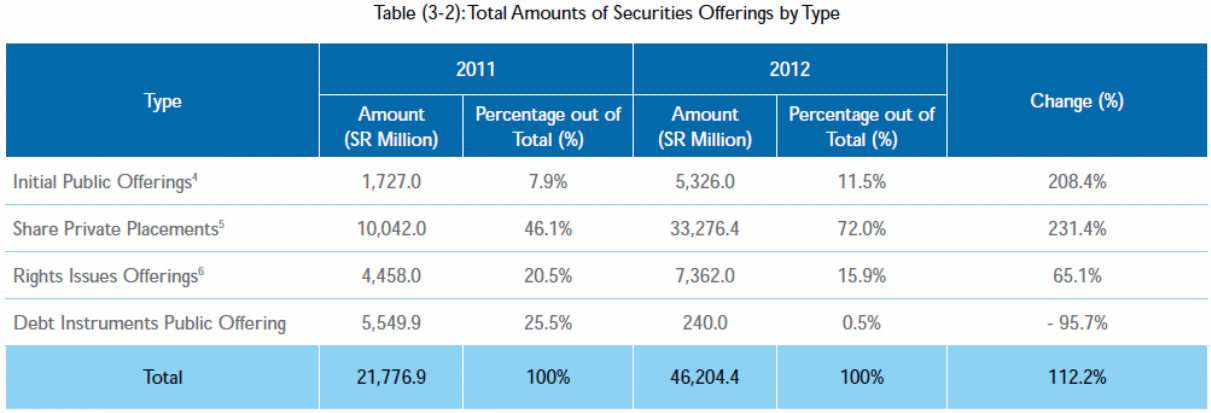
Appendix 2
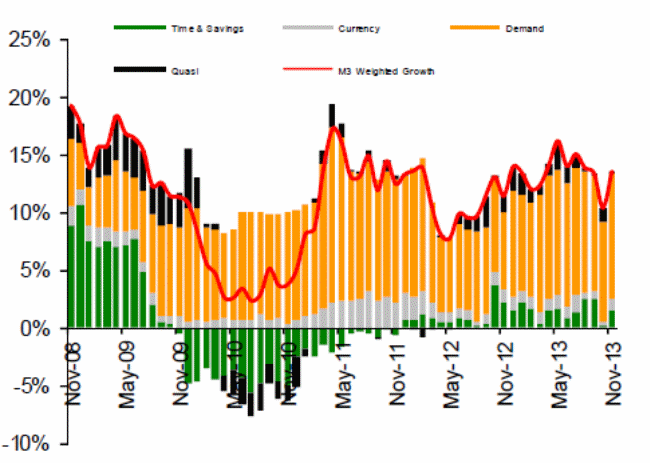
Appendix 3
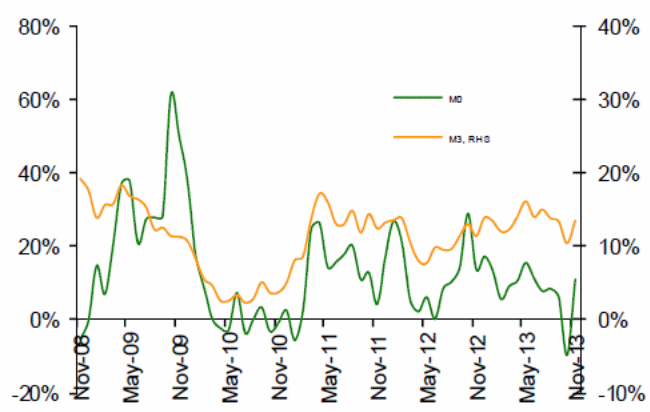
Appendix 4
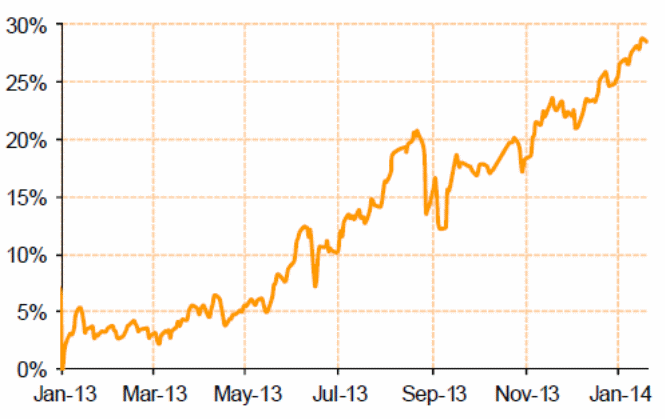
Appendix 5
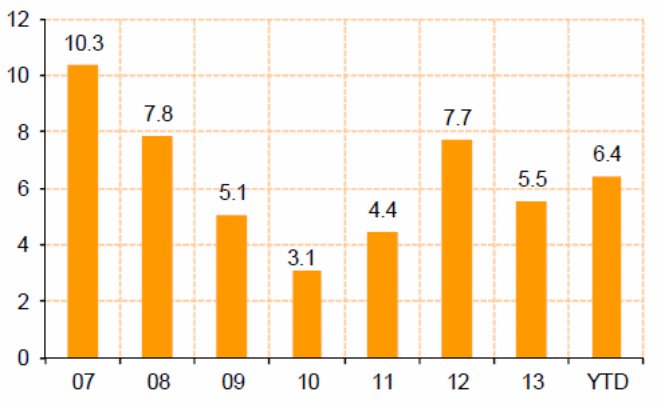
Appendix 6
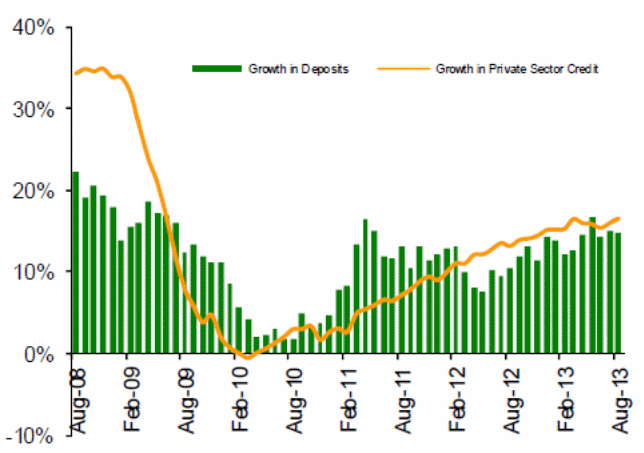
Appendix 7
Source: Saudi Arabian Monetary Agency (2014).
Appendix 8
Export and import table.
Source: Saudi Arabian Monetary Agency (2014).